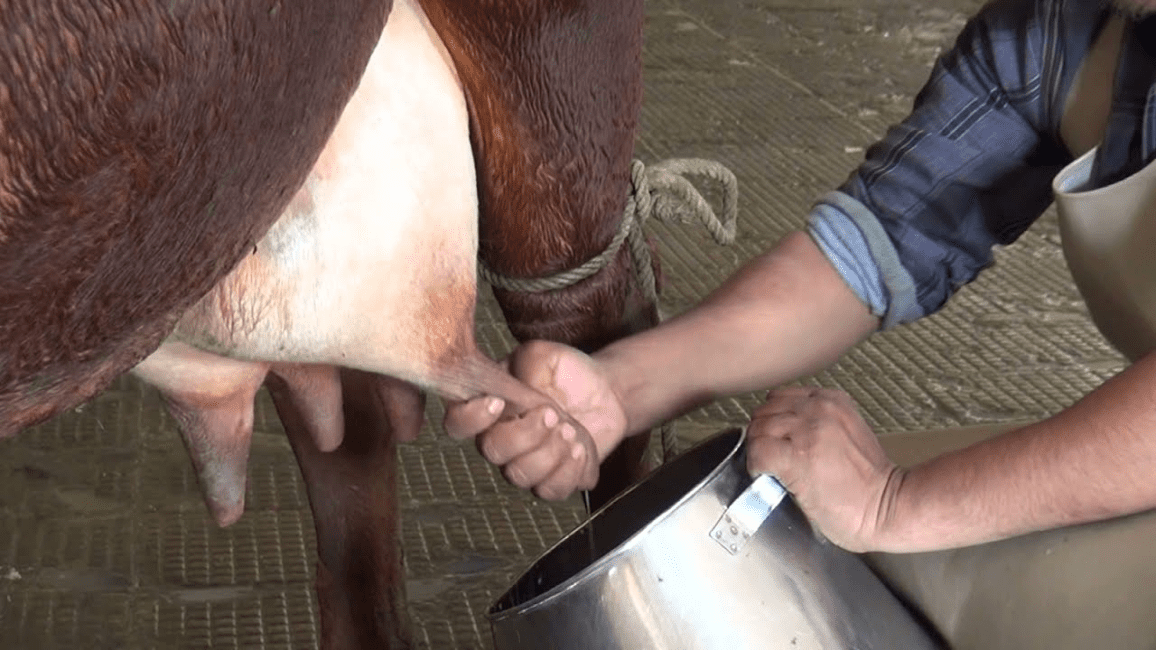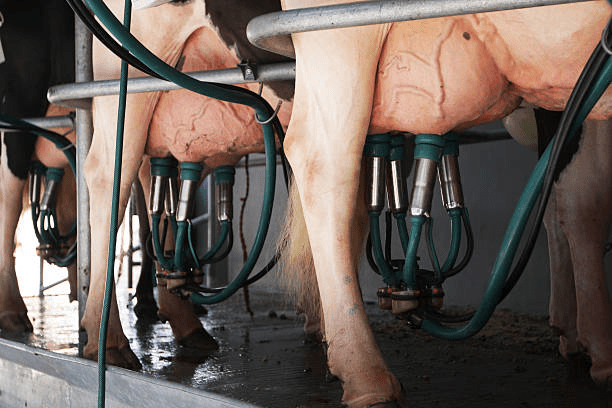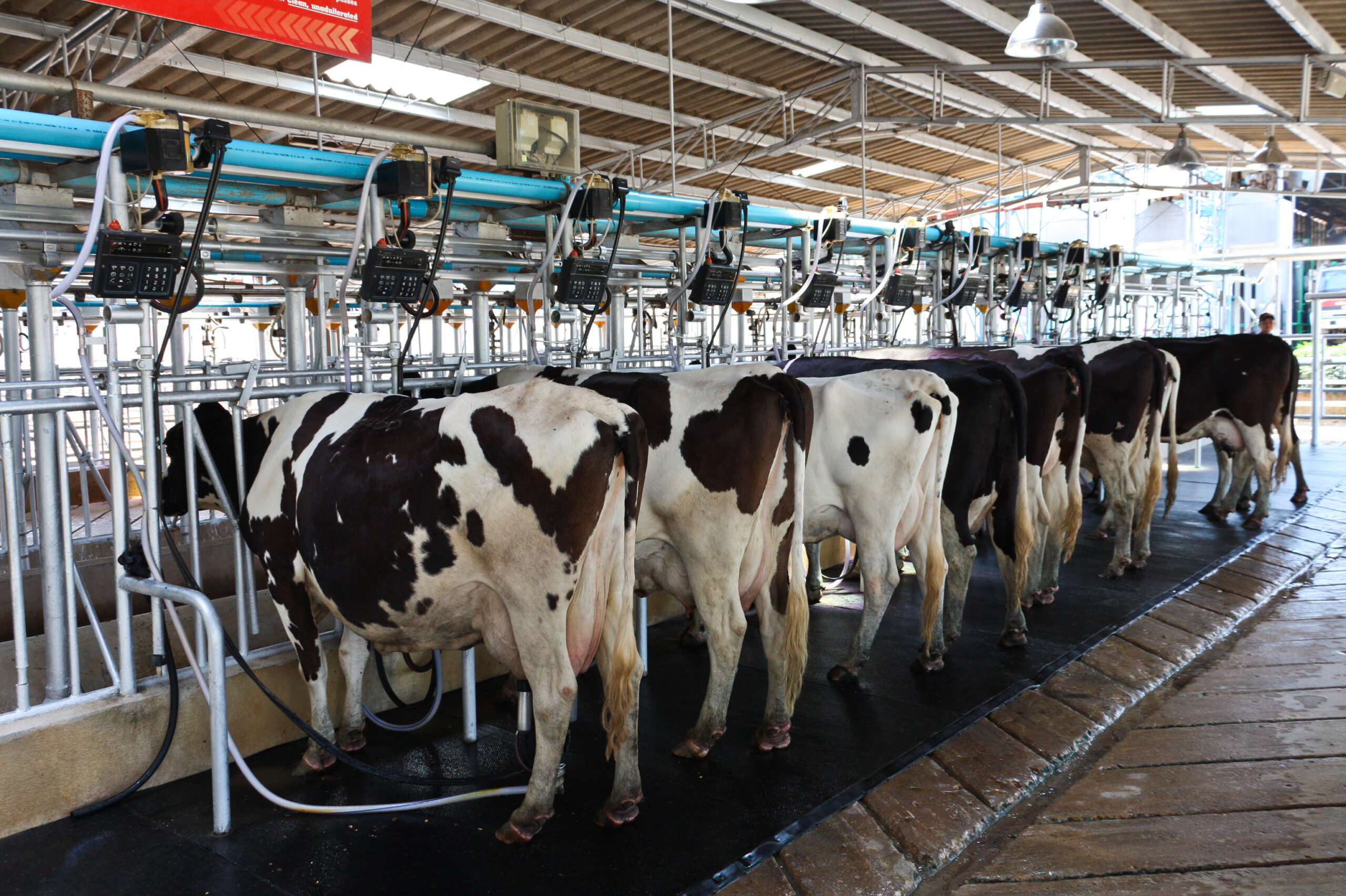The methods of milking involves several key steps to ensure good milk let down, reduce the risk of mastitis, and remove milk efficiently. Generally, Milking dairy animals involves the process of extracting milk from animals like cows or goats.
This process is done carefully to ensure that the milk is collected in a clean and hygienic way, keeping both the animals comfortable and the milk safe for consumption. It requires skill and knowledge to perform correctly, so the milk remains high quality and the animals stay healthy.
A. Hand Milking

Cows are milked from the left side. After the milk let-down, the milker starts by milking the teats, either from front to back or by milking the most swollen teats first. A few streams of fore milk from each teat are collected in a strip cup. This helps remove dirt from the teat canal and allows the milker to check for mastitis.
Milking is done either by stripping or the full hand method. Stripping involves holding the teat between the thumb and forefinger, pulling it down the length of the teat, and pressing to make the milk flow. The full hand method involves grasping the teat with all five fingers and pressing.
Advantages
1. Low Initial Cost: Requires minimal equipment, so there are no significant upfront expenses.
2. Flexibility: Suitable for small-scale operations and can be used in various environments, including places without electricity.
3. Gentle on Cows: Can be more careful and gentle, reducing the risk of injury or discomfort to the cow’s udder.
4. Better Monitoring: Allows for direct observation of the cow’s condition and milk quality, making it easier to detect issues like mastitis.
5. No Dependence on Power: Doesn’t require electricity, making it ideal for remote locations.
Disadvantages
1. Labour-Intensive: Requires physical effort and time, which can be tiring and slow, especially with larger herds.
2. Inconsistent Milk Removal: May not be as effective in ensuring complete milk removal, which can affect milk production and quality.
3. Potential for Hygiene Issues: More prone to human error in maintaining hygiene, which can affect milk quality.
4. Skill Dependent: Quality of milking can vary depending on the skill and experience of the person milking.
Read Also: Milking Process in a Diary Farm
B. Machine Milking

Modern milking machines can milk cows quickly and efficiently without injuring the udder, as long as they are properly installed, maintained, and used. The machine performs two main functions:
1. It uses a partial vacuum to open the streak canal, allowing the milk to flow from the teat cistern through a line to a container.
2. It massages the teat to prevent blood and lymph congestion.
Advantages
1. Efficiency: Milks cows quickly and consistently, handling larger herds with less physical effort.
2. Consistent Milk Removal: Can more effectively remove milk from the udder, improving milk production and quality.
3. Time-Saving: Reduces the time required for milking, allowing for more efficient use of labour.
4. Hygienic: Modern machines are designed to maintain high hygiene standards, reducing the risk of contamination.
5. Less Physical Strain: Reduces the physical labour involved in milking, which can be beneficial for the operator’s health.
Disadvantages
1. High Initial Cost: Requires a significant investment for purchase and installation.
2. Maintenance Requirements: Needs regular maintenance and repairs to ensure proper operation and to prevent damage to the udder.
3. Risk of Injury: If not properly used or maintained, machines can cause injuries or discomfort to the cow’s udder.
4. Dependence on Power: Requires electricity, which might not be available in all locations or can be affected by power outages.
5. Training Required: Operators need proper training to use the equipment correctly and to handle any issues that arise.
In conclusion, the milk process involves important steps to ensure good let-down, minimize mastitis risk, and remove milk efficiently. Hand milking, done manually, is cost-effective and flexible but labor-intensive and less consistent.
Machine milking is quick, efficient, and hygienic, but requires significant investment and maintenance. Both methods have their own benefits and limitations depending on the size of the operation and resources available.
Read Also: How To Raise Chickens – The Simple Secrets To A Great Backyard Flock

